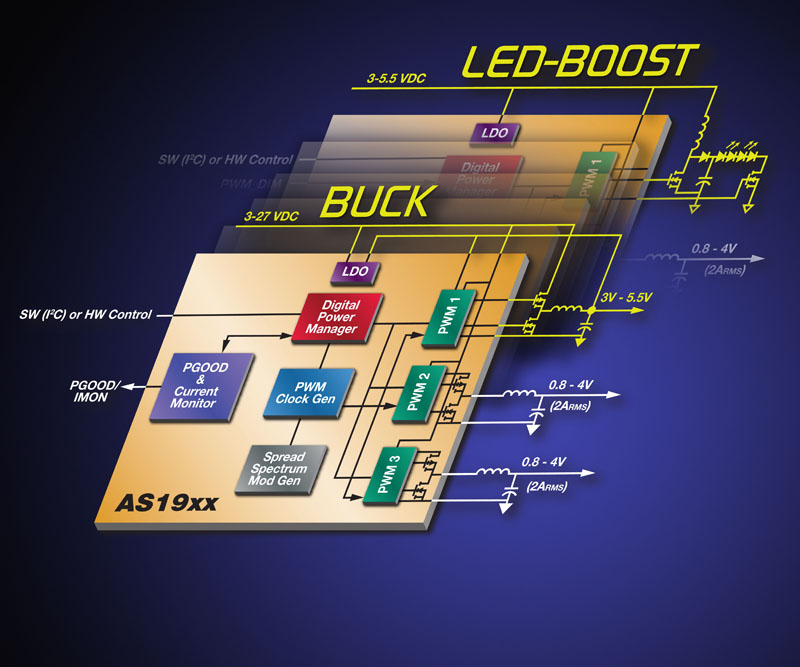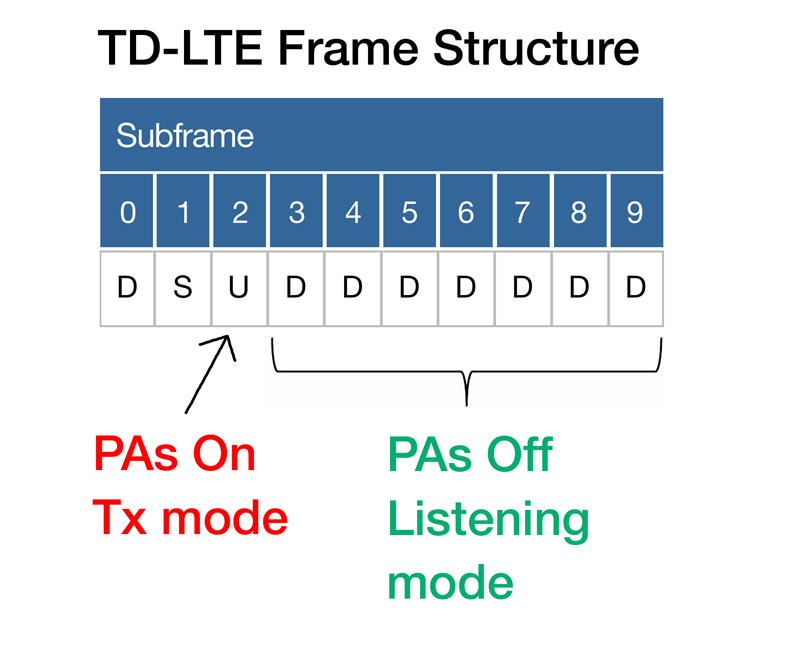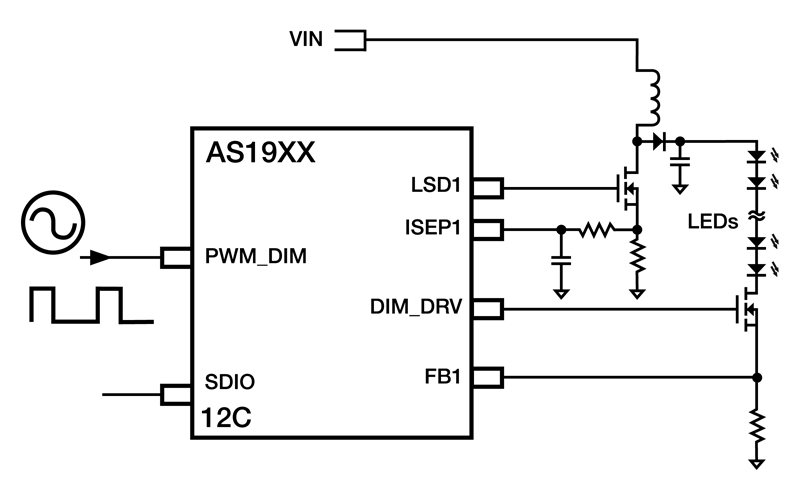Energy management techniques have emerged as competitive and differentiating features of electronic equipment. Traditional DC-DC Integrated Circuit (IC) point solutions have focused on optimizing single power parameters via fine tuning of components. That is no longer sufficient or practical for managing system energy consumption under real-time and multi-variable operating conditions. This article describes a novel new approach to energy management in electronic devices through use of DC-DC converters with the ability to monitor and control several aspects of their sub-power delivery system on the fly. Using digital interfaces on new multi-rail power management units, system designers can now go far beyond just high-efficiency static designs. In this article, a description of this approach and the key parameters required for a Total Energy Management (TEM) implementation will be analyzed. What is Total Energy Management? Traditionally power system designers have focused heavily on efficiency of power conversion as an end objective of the design. This is because limited interaction or data exchange has been possible between the power sub-systems and rest of the designs. Power subsystems are manually optimized at the time of design and are not part of a dynamic and adaptive loop based on real-time operating state of the equipment. Total Energy Management is an approach that not only provides high-efficiency power conversion ICs, it also focuses on total system efficiency. The objective is to dynamically control the power by monitoring the environment resulting in truly efficient system designs - not just of power sub-conversion. Another important aspect of a power subsystem design is the amount of radiative or conductive noise energy that it creates. Most modern power supplies are based on switching mode operation where large amount of currents are being switched on clock edges. That can lead to both conductive and radiative emissions. Managing these emissions can be a challenging and costly affair, both in terms of bill-of-material costs and engineering time. Minimizing these emissions systematically at the source is part of the TEM approach of power system design. Implementation of Total Energy Management requires features such as (see Figure 1): Real-time energy monitoring - like input power measurements, power system health monitoring on a continuous basis High efficiency conversion - including light load management, ultra-low standby power and sleep-mode power Fast system dynamic response and sequencing control - including the ability to rapidly change operating mode of the device from continuous to discontinuous modes, rapidly go in and out of standby and sleep modes ; flexible sequencing control to optimize multiple-rail output power start-up Digital power control - like voltage margining to manage power consumption under differing performance requirements, managing standby and sleep requirements High-efficiency EMI control and mitigation - minimizing radiative and conductive emission noise from the power supplies.

An energy management IC solution implementing such a feature set will exceed the traditional boundaries of power management ICs that are single block components optimizing one or two specific system parameters. Moreover implementation of such a feature set requires digital interface and intelligence in the power subsystem that can be utilized across multiple-rails in a Power System-on-Chip (SoC) setup. The right approach is to integrate these essential energy management features into multi-rail power management device in a SoC like fashion. An example of the TEM approach is Akros Silicon's new Energy$ense AS19xx family of high efficiency DC-DC converters. Each digital power management unit (DPMU) integrates multiple features into each device (Figure 2). The product family comprises 10 products with five different power manager topologies. All are pin and PCB compatible and come in either hardware or software (I2 C interface) versions. Each has three or two outputs as a combination of two fully integrated synchronous DC-DC converters and one versatile controller configurable as buck, boost or LED drive.

Total Energy Management is applicable to a wide range of applications, including 4G LTE residential gateways and femtocells to tablets and large display-oriented consumer devices, ultra-books, e-books, digital photo frames, NAS and media hubs, Internet-TV and IPTV set-top boxes, automotive infotainment systems, solid-state lighting, and communication equipment with cluster-power or intermediate bus architectures, as well as many other applications. Here are a few examples of how this integrated approach facilitates the design and improves operational performance and efficiency: Dynamic Power Amplifier Control 4G LTE Gateways/Cells using TD-LTE require the power amplifier (PA) to be operational only during the transmit mode. Typical PA efficiency even at the highest transmit power levels is below 40% due to linearity requirements. By employing dynamic, high-speed control, the PA power can be disabled during the listening mode (Figure 3), thus eliminating energy waste. The AS19xx devices can enable/disable each rail in 10uS - fast enough to permit this function without external control.

Dynamic LED Backlight Control A Tablet PC's LED backlight screen consumes >50% of its power and is the biggest factor in battery life of the device. LED backlight management is not new. Traditional DC-DC convertors support either Analog or PWM based dimming. The AS19xx devices support that but go a step further in supporting a fully integrated internal I2C-based 32-step (5-bit) logarithmic PWM dimming. This not only reduces external components but enables system designers to use a fully software-based approach to dimming by simply writing a "dimming word" to the device. Now software can dim the screen based on content, such as when watching a movie as opposed to reading content, bringing next level of battery performance optimization without adding cost and components to the design (Figure 4) Real-time Input Power Measurements During the development phase of an electronic system, changes in the software can have dramatic effects on power consumption. TEM devices, like the AS19xx, are capable of providing feedback on power usage on each rail in real time. This can speed development and result in more efficient product designs. EMI Management Switch-mode power supplies require EMI filtering to minimize the injection of power supply noise onto the power line to prevent radiative and conductive emissions. This leads to extra bill-of-material cost and design efforts. The AS19xx devices use integrated spread-spectrum clocking to mitigate EMI. This leads to less design cost, higher system efficiency, and faster time to market. Conclusion The insatiable appetite for power and multiple rails in modern electronics is only matched by the need for high performance and advanced operational and control features that confront power system designers. Their major challenge is to achieve all the design requirements with an implementation that has the highest efficiency (?95%), occupies the smallest possible PCB real estate, and at a cost sometimes bordering on the impossible. In other words, IC designers have to become system designers who use the available data to make energy management choices for their applications. The most critical question designers must consider is this: which IC(s) will do the job? A Total Energy Management approach embodied in Akros' AS19xx DC/DC converter family offers a simple, elegant answer. The solution meets the designer's energy management needs without adding complication, space and cost — all while providing real-time power monitoring and adding energy management features that increase efficiency. The idea behind this 10 IC product family is to offer designers a choice of selectable ICs that can be used in a wide range of applications and across a multitude of platforms. www.akrossilicon.com